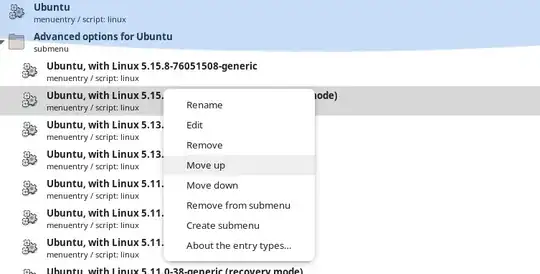Running Ubuntu 18.04 LTS I got a notice that an upgrade was needed and I consented. The upgrade updated my kernel from 5.4.0-91-generic to ...-92 and broke things. I can still boot to ...91 from GRUB.
I'm unable to spend any more time trying to resolve the upgrade problem at this time and would like to just uninstall it. However, I realize uninstalling is not the same a reverting and I am reluctant to just uninstall the ...92 upgrade as other things may be lost.
What can I do to remove the ...92 upgrade and get my machine back without damaging the OS?
The machine boots and I can SSH into it.




sudo apt install grub-customiser. My answer also provides a CLI solution. It's your choice both the answers are correct :D BTW there is nothing wrong with that PPA. As its tested and trusted. – Error404 Jan 09 '22 at 04:55